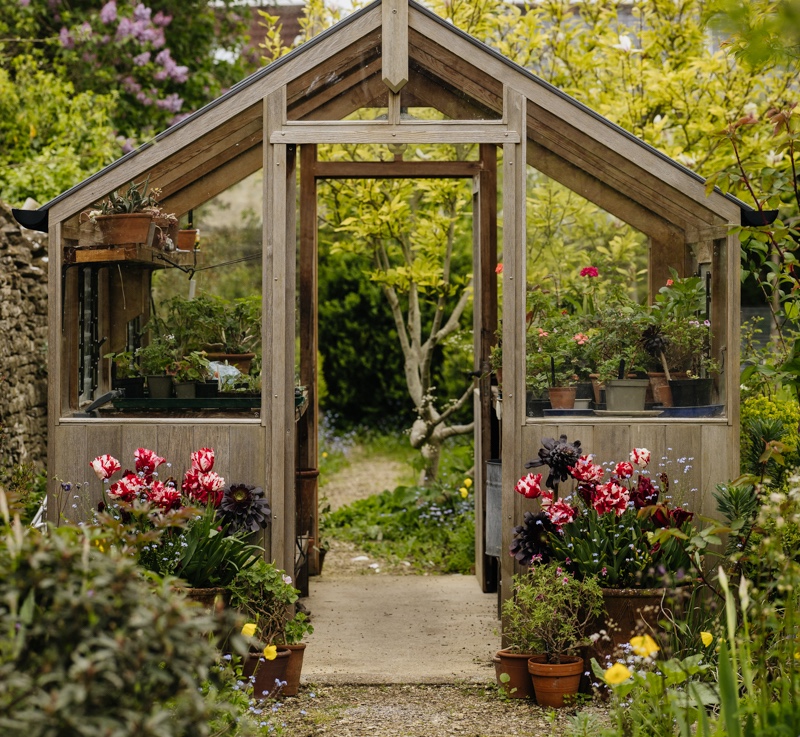I’ve killed more houseplants than I’d like to admit. Some of that is due to having a job that requires me to travel two weeks of every month, and the other part is about not having the patience to provide my potted wards with the care and feeding they need to survive. The first casualty was a braided money tree whose soft green leaves shriveled into brownish-gray wisps after an extended vacation abroad. The second was a basil plant that withered after an emergency harvest for a caprese salad. My biggest regret was a tabletop calamansi tree that died after too much exposure to an overactive space heater. In the battle to make my home greener, the houseplants were losing.
Despite my dismal record, I continued to buy plants. Call it hopeless optimism, but I still believe that my house can be filled with green, vibrant plants. Here in San Francisco, I’ve come to love wandering through garden shops like Paxton Gate, Utsuwa, and Flora Grubb on the weekends to search for fragrant herbs, hardy succulents, and handmade planters. As I’ve given up the wild nights of my twenties for the decidedly more domestic days of my thirties, successfully growing things has become a barometer of whether I can turn my house into a real home.
If this story sounds all too familiar, fear not. There is hope. I’ve discovered a few tips and tricks that have helped me to keep my plants alive.
My secret is to structure my plant care around my life. Making my plants adapt to my normal, day-to-day activities, means they’re flourishing. I’ve placed succulents in the bathroom where they can absorb mist from the shower; put planters above the sink to make it easy to remember to water them, and suspended a hanging plant near a skylight to create a mini-greenhouse. My plants still need attention, but my occasional lapses in judgment are more likely to be forgiven.
So far, my strategy is working. I’m coming up on a year of keeping my plants happy and healthy. My six tips are below, but I’m sure that a lot of you out there have great ideas of your own. What tactics do you use to keep your plants healthy?
Photographs by Matt Castaños and Mira Kim for Gardenista.
Tip 1: Place your plants in places where you can’t forget them. Giant snail shells filled with hanging succulents and flowering vines hanging on a pot rack soak up stray droplets from the sink. A Hanging Snail Shell With a Tillandsia is $22 from Utsuwa.
Tip 2: Find your home’s natural greenhouses. A bedroom skylight gives a miniature jungle in a glass pendant much-needed light. A Large Teardrop Hanging Terrarium is $40 from Utsuwa.
Tip 3: Figure out which parts of your home naturally support your plants. A family of succulents in the bathroom thrive on mist from the nearby shower. A similar small Tilly Canoe planter (in cobalt) is $34 from Flora Grubb.
Tip 4: Choose plants that don’t need a lot of work. A tillandsia in a shell requires minimal spraying, thanks to being near a constantly open window that lets in the fog. A Collection of Tillandsias is available at prices ranging from $3.75 to $42.50 per plant from Paxton Gate.
Tip 5: When in doubt, pick plants that look good even when dead. A tree made of dried manzanita wood makes a bold statement while requiring zero maintenance. A Natural Red Manzanita Branch is $6.48 (minimum order is two) from Blooms and Branches.
Tip 6: Avoid plants that require long term commitment. The small size of these planted succulents make them easy to carry and move around the house. An assorted Collection of 9 Succulent Plants is $27 from Succulents Galore via Etsy.
Are you a recovering plant assassin too? See our recent post on Expert Advice: 10 Best Low-Maintenance Houseplants.
Finally, get more ideas on how to plant, grow, and care for various houseplants with our Houseplants: A Field Guide.
























Have a Question or Comment About This Post?
Join the conversation (6)